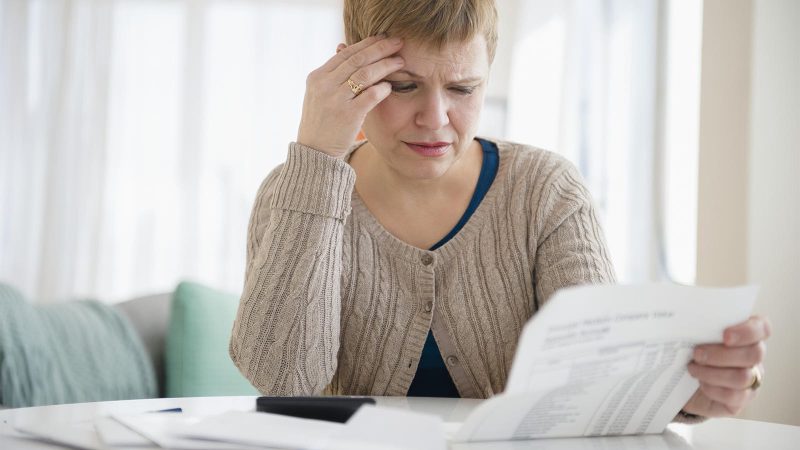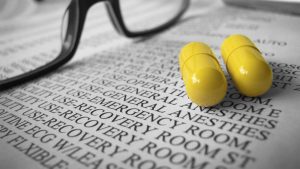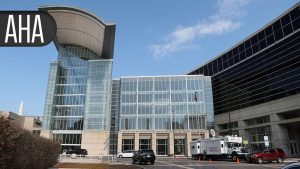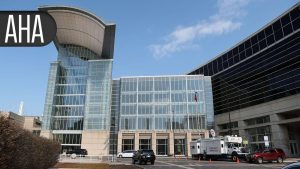Medical Debt Is Killing Our Patients

As an emergency medicine resident in the early 2000s, I cared for a patient in her early 60s with back pain. Prior to the passage of the Affordable Care Act (ACA), approximately 16% of emergency department patients were uninsured. Often their issues were of low acuity, again because they had no other place to see a physician. I assumed that to be the case with this patient, that I would treat her presumably musculoskeletal back pain, and discharge her. However, while treating her, I noticed she struggled to walk and clutched her gown across her chest. It was the clutching that really struck me as unusual.
When I examined her chest, I saw something unexpected, right out of the medical history books. Her entire left breast was as hard as a rock, consumed by cancer that likely developed over months, if not years. She had severe hypercalcemia and was on the verge of going into cardiac arrest as a result.
After I stabilized her, I gently inquired why she had not sought care sooner. She explained that she did not have insurance, had previously sought care for other conditions, gone into debt, and feared that if she again sought care, her debt would only get worse. While I could alleviate her pain, it was too late for my patient to be cured of her illness, and she died shortly after hospital admission.
This story is all too common in the U.S.
Americans owed at least $195 billion in medical debt as of 2019, with medical debt disproportionately burdening people of color and adults with disabilities. Medical debt is the leading cause of bankruptcy in our country, and thousands use GoFundMe and other sites to raise funds to pay for their healthcare. But only 12% raise the funds necessary to pay for treatment, and it is incomprehensible that such pleas should be the norm. With healthcare spending predicted to increase by 5.2% by 2026, alleviating medical debt is a critical public health priority.
While the ACA expanded insurance access, the number of health insurance plans with high deductibles and co-payments continues to increase, which puts a strain on Americans’ finances should they need medical treatment.
Under the Emergency Medical Treatment and Labor Act, hospitals must treat patients that enter their emergency department, regardless of their ability to pay. This contributes to billions in uncompensated medical treatment per year, as approximately 25% of Americans struggle to pay their bills. This burden is commonly shifted through rising prices for the commercially insured, making medical debt a problem that affects all of us.
These high bills can act as a death sentence for some Americans as they refuse to seek further treatment, simply due to their medical debt. As physicians, we have a responsibility to treat patients. Legislators, similarly, have a duty to the residents they represent. We have a responsibility to reform the American healthcare system, beginning with medical debt relief, in a fiscally responsible manner that does not incentivize the non-payment of medical bills by those who can afford to do so.
As an emergency physician, Pennsylvania state representative, the only physician-legislator in our General Assembly, and the first physician in our legislature in nearly 60 years, I personally believe there is no greater health priority in my state. As such, I introduced the Medical Debt Relief Act.
By establishing the Medical Debt Relief Program in the Pennsylvania Department of Health, this bill would discharge medical debt by using state funds to contract with a medical debt relief coordinator who would partner with hospitals and other healthcare providers to identify unpaid medical debt among those who make less than 400% of the federal poverty level or pay more than 5% percent of their annual income in medical debt. In turn, coordinators would purchase that debt, forgive it, and only then notify the patient that their debt is relieved. Because the debt is distressed, it can be purchased for pennies on the dollar, similar to what debt collectors do. But unlike debt collectors, the debt is forgiven and not pushed into collections. Similarly, because the medical debt relief coordinator is classified as a charity, the patient does not incur a new tax obligation from this debt forgiveness. My legislation would alleviate medical debt for hundreds of thousands of Pennsylvanians, predominantly aiding residents in rural Pennsylvania, women, and people of color who bear the disproportionate burden of medical debt in collections. This is a win for patients, clinicians, and the public.
Similar efforts to relieve medical debt have worked at the county and municipal level, and states such as New Jersey and Connecticut have budgeted for medical debt relief programs. While previous efforts have used American Rescue Plan funds to finance these efforts, the potential 100:1 return on investment of state dollars makes my proposed approach through the general budget process particularly attractive and impactful.
In addition, my bill would require hospitals to publicize their charity care programs, assist potentially eligible patients with their applications for charity care programs, and hold bills in abeyance until that eligibility for charity care is determined. We have seen multiple stories of non-profit health systems not meeting their charity care obligations, and this part of the bill would address one of the root causes of the accumulation of medical debt. My legislation passed the Pennsylvania House of Representatives on a bipartisan vote and is now the subject of negotiations for inclusion in our state budget.
As an emergency physician, I have far too often seen the gaps in our fragmented and expensive healthcare system. My experience of seeing a patient die due to the accumulation of medical debt is not unique. No one believes medical debt is a good feature of our healthcare system. The Pennsylvania Medical Debt Relief Act can serve as a model for how we can address this crisis in a responsible fashion both to provide direct patient relief and prevent the perpetuation of this American tragedy. I encourage other cities and states to enact similar legislation.
Arvind Venkat, MD, is an emergency physician and Pennsylvania state representative for the 30th Legislative District in the North Hills suburbs of Pittsburgh.








